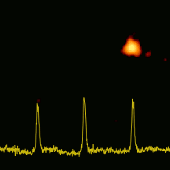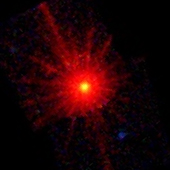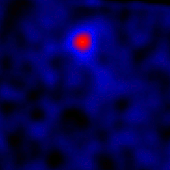ESA Science & Technology - News Archive
News archive
News archive
Proposals are solicited for observations with XMM-Newton in response to the twentieth Announcement of Opportunity, AO-20, issued 18 August 2020. This AO covers the period May 2021 to April 2022 and is open to proposers from all over the world. The deadline for proposal submission is 9 October 2020, 12:00 UTC.
An observation campaign led by ESA's XMM-Newton space observatory reveals the youngest pulsar ever seen – the remnant of a once-massive star – that is also a 'magnetar', sporting a magnetic field some 70 quadrillion times stronger than that of the Earth.
Astronomers have assumed for decades that the Universe is expanding at the same rate in all directions. A new study based on data from ESA's XMM-Newton, NASA's Chandra and the German-led ROSAT X-ray observatories suggests this key premise of cosmology might be wrong.
A star of about eight percent the Sun's mass has been caught emitting an enormous 'super flare' of X-rays – a dramatic high-energy eruption that poses a fundamental problem for astronomers, who did not think it possible on stars that small.
Material falling into a black hole casts X-rays out into space – and now, for the first time, ESA's XMM-Newton X-ray observatory has used the reverberating echoes of this radiation to map the dynamic behaviour and surroundings of a black hole itself.
ESA's XMM-Newton has discovered that gas lurking within the Milky Way's halo reaches far hotter temperatures than previously thought and has a different chemical make-up than predicted, challenging our understanding of our galactic home.
ESA's XMM-Newton X-ray observatory has spied hot gas sloshing around within a galaxy cluster – a never-before-seen behaviour that may be driven by turbulent merger events.
On 10 December 1999, as XMM-Newton launched from Europe's spaceport in Kourou, French Guiana, no one was expecting that the mission would last for two decades.
During its 20 years in space, ESA's XMM-Newton X-ray observatory has made many exciting discoveries. But no one could have predicted that the very first observation of the spacecraft would be one of its most important.
ESA's X-ray observatory, XMM-Newton, has now spent 20 years in orbit. In those two decades it has made many scientific breakthroughs, helping bring X-ray astronomy into the main stream of astronomical investigation.
For the first time, astronomers have detected synchronised pulses of optical and X-ray radiation from a mysterious pulsar some 4500 light years away. The observations indicate that a new physical mechanism might be needed to explain the behaviour of fast-spinning sources like this one, known as transitional millisecond pulsars.
ESA's X-ray space telescope XMM-Newton has detected never-before-seen periodic flares of X-ray radiation coming from a distant galaxy that could help explain some enigmatic behaviours of active black holes.
Proposals are solicited for observations with XMM-Newton in response to the nineteenth Announcement of Opportunity, AO-19, issued 20 August 2019. This AO covers the period May 2020 to April 2021 and is open to proposers from all over the world. The deadline for proposal submission is 11 October 2019, 12:00 UTC.



















